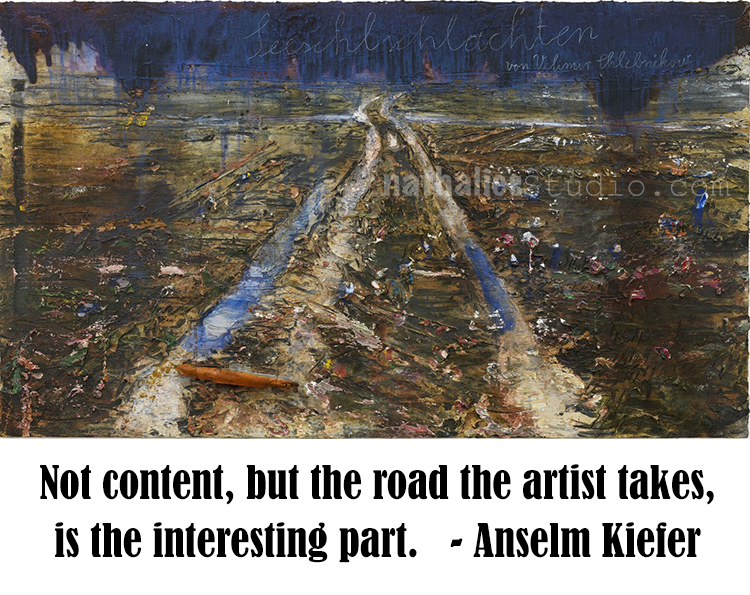
Artist Quote of the Week – Anselm Kiefer



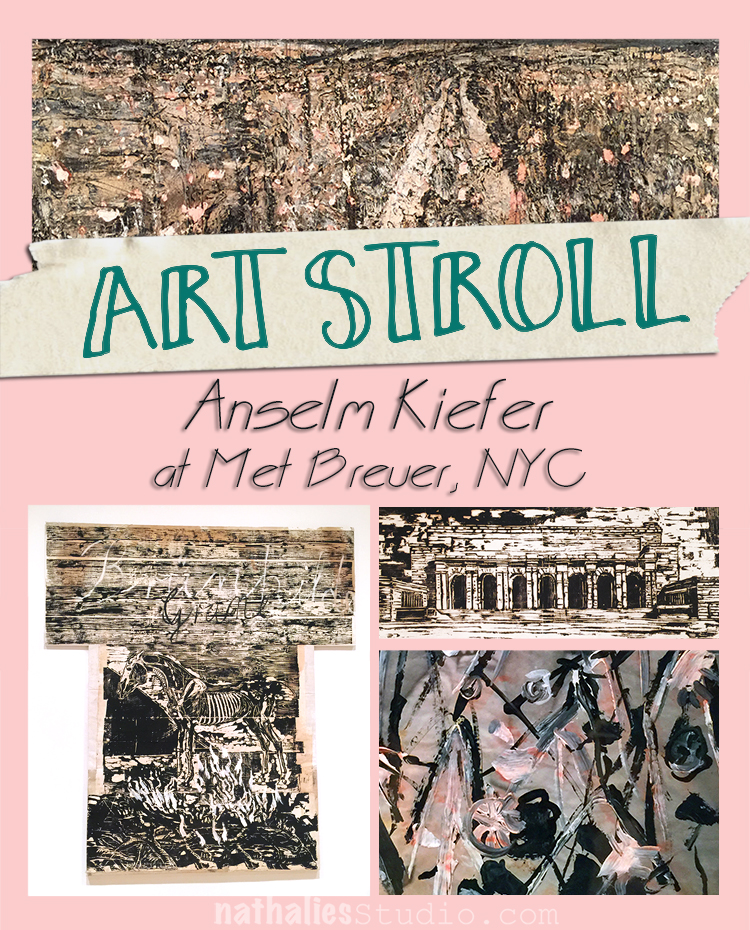
While at the Met Breuer I also strolled through the small Anselm Kiefer exhibition because as some of you might know I admire his work so much, the themes, the materials …. Some of the pieces I had just recently seen on an Art Stroll at the Gagosian Gallery , so I am not posting those again, but there were many other pieces that I loved to study.
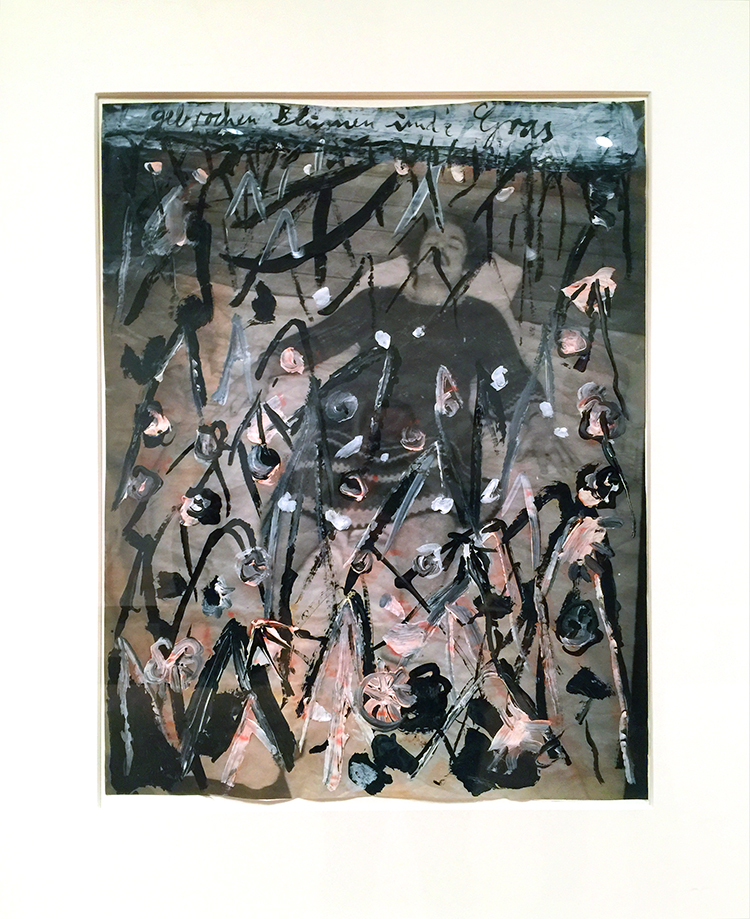
Broken Flowers and Grass, 1980 – Gouache, acrylic, watercolor and shellac on photograph.
During the 80s Kiefer began reusing earlier self-portraits to create new works. Dressed in a crocheted gown, the artist presented himself as if asleep , but the broken flowers and grass cover his body as if he were dead and buried, the ultimate state of transformation.
The mixture of the photo and the crude painting on top fascinates me.
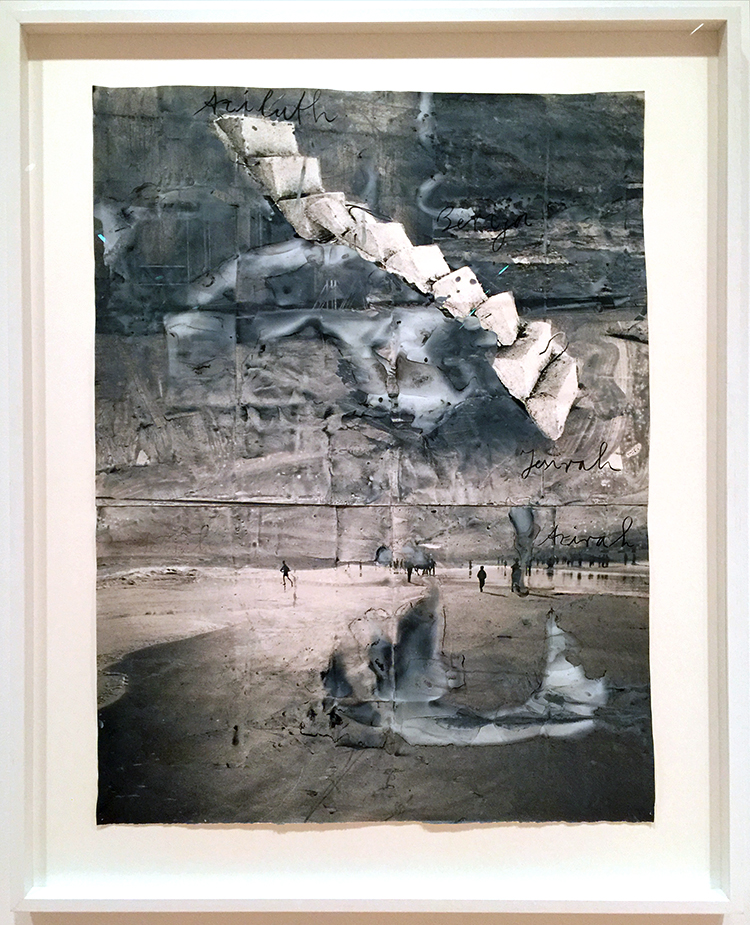
Aziluth, 2004 – painted photograph and collage on paper
Stunning- and guess how much I wanted to touch this piece. I just love the interplay of photo, collage and painting!
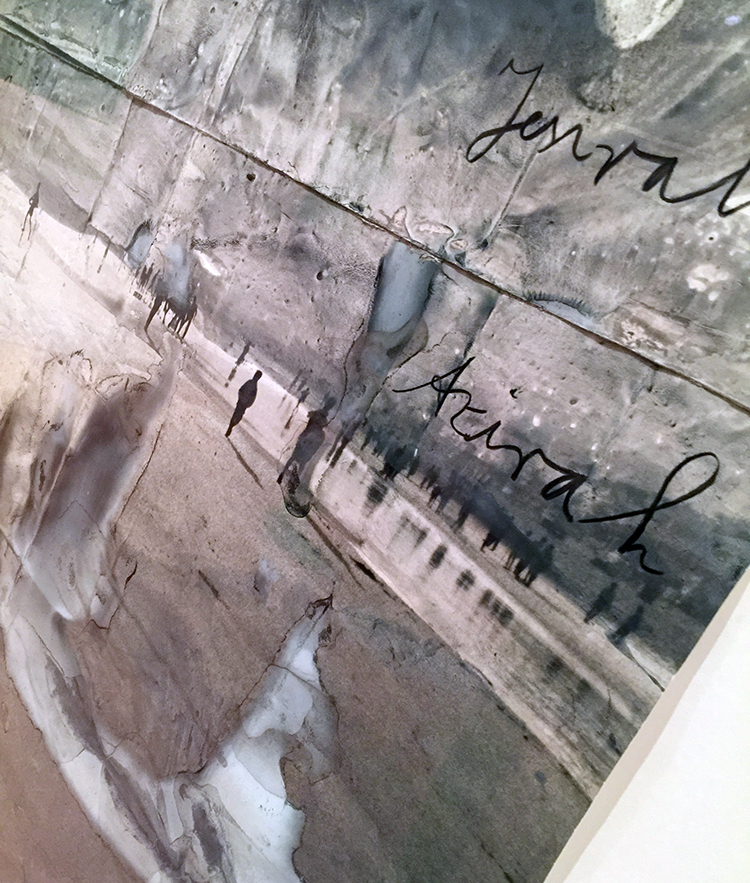
No touching of the one below:
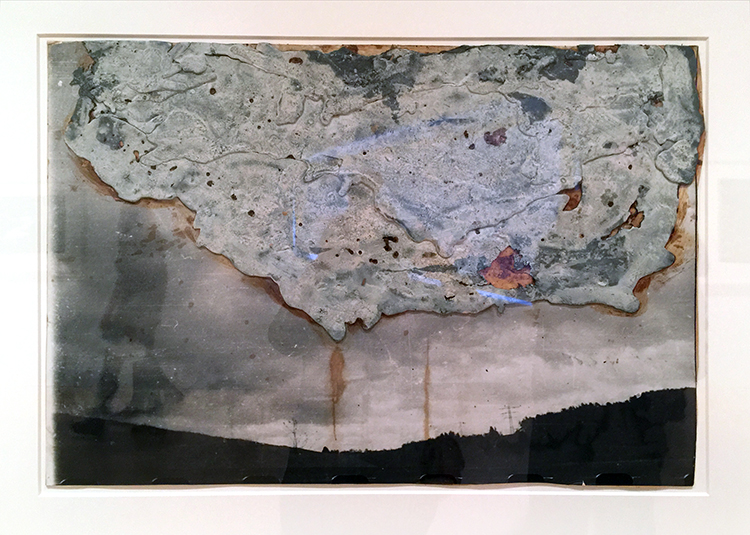
Heavy Cloud, 1985 – Lead and shellac on photograph, mounted on cardboard
Kiefer has often used lead to represent something usually thought to be weightless. Here the title is a pun on “heavy Water” a synonym for radiation in nuclear reactors. Kiefer has pointed out that even though lead is used to “seal radiation” his Heavy Clout has “a radiation leak” symbolized by the yellow shellac streaks seeping form the bottom of the cloud in the direction of the bleak landscape.
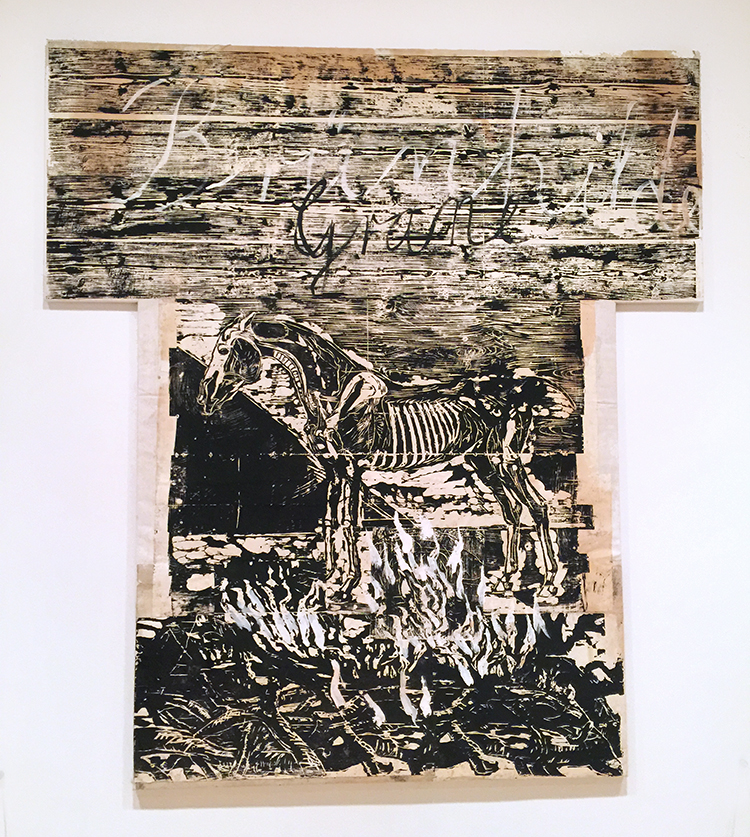
Brünnhilde/Grane 1982/93 – Woodcut and acrylic on cut and pasted papers, mounted on canvas
Woodcut is a traditional medium in German art. Kiefer began to experiment with woodblock printing in the early 1970s and returned to it in the late 70s focusing on subjects related to German history and myth. Fo all theGermanic tradition evoked in his turn to the woodcut, his practice was nontraditional in his choice of a larger format and a visibly seamed composition. One of the artist favorite themes at this time was Grane, the sacred steed ridden by Brünnhilde, when she sacrificed herself on Siegfried’s funeral pyre at the close of Wagner’s opera Götterdämmerung.
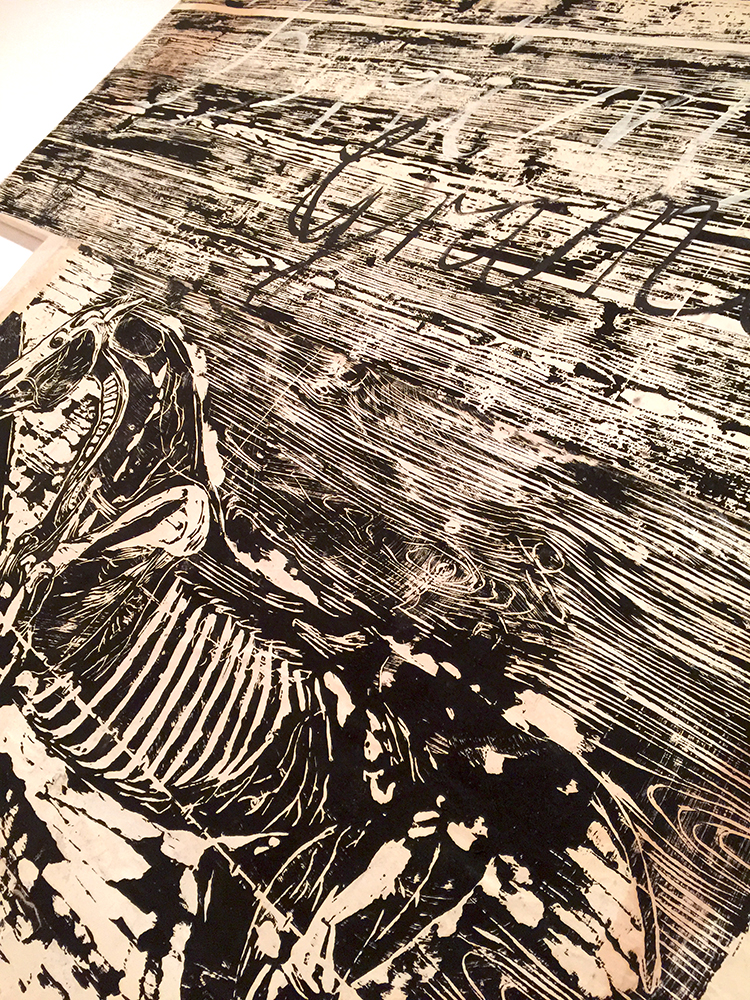
The texture, the details, and then the size- just amazing!
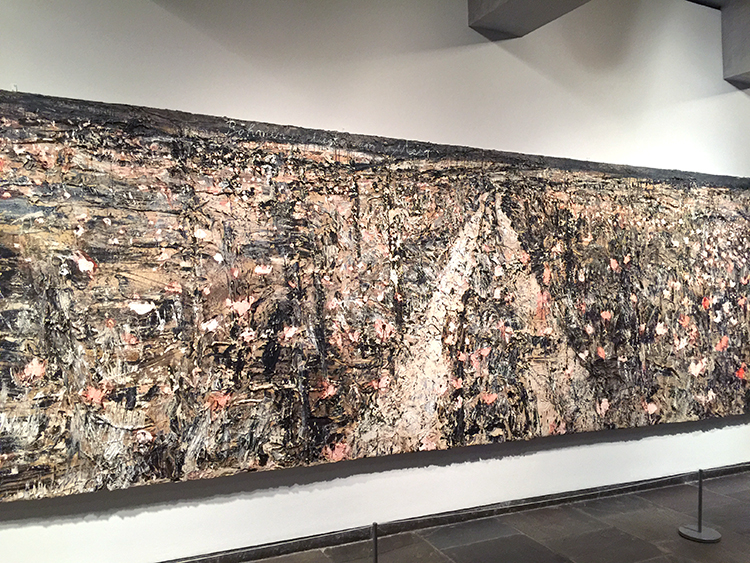
His gigantic paintings are just breath taking- the texture – omg – I could sit in front of this forever. Unfortunately the hallway as the entrance to the exhibition where this was hung was so narrow that it was hard to take the painting in in total. Plus the museum was super crowded …even if not as crowded as in other galleries of the Met Breuer.
It was a very inspiring Art Stroll that let me think about more and different ways to integrate photos, collage and painting …printing …texture …all of it in my work. Hope you enjoyed the stroll as well :)
LOL maybe I will ping you next time and we go together ;) It is a small but fine little exhibition – combine it with the MET to make the day worthwhile ;)
I too love Anselm Kiefer. Many years ago there was an exhibit of Kiefer’s large works at the Art Institute of Chicago. I was in awe of the scale and texture. There was hay and dirt in one of the works! I had never seen anything like it. The principle that art maybe isn’t supposed to last was also new to me. I went back several times and loved it. Thank you for the great visit.
I agree- I love how he is working so much with the concept of transforming art! It must be such an liberating feeling to do art with that concept- I wish I was there yet :) Thank you for joining me on the stroll Kathryn!

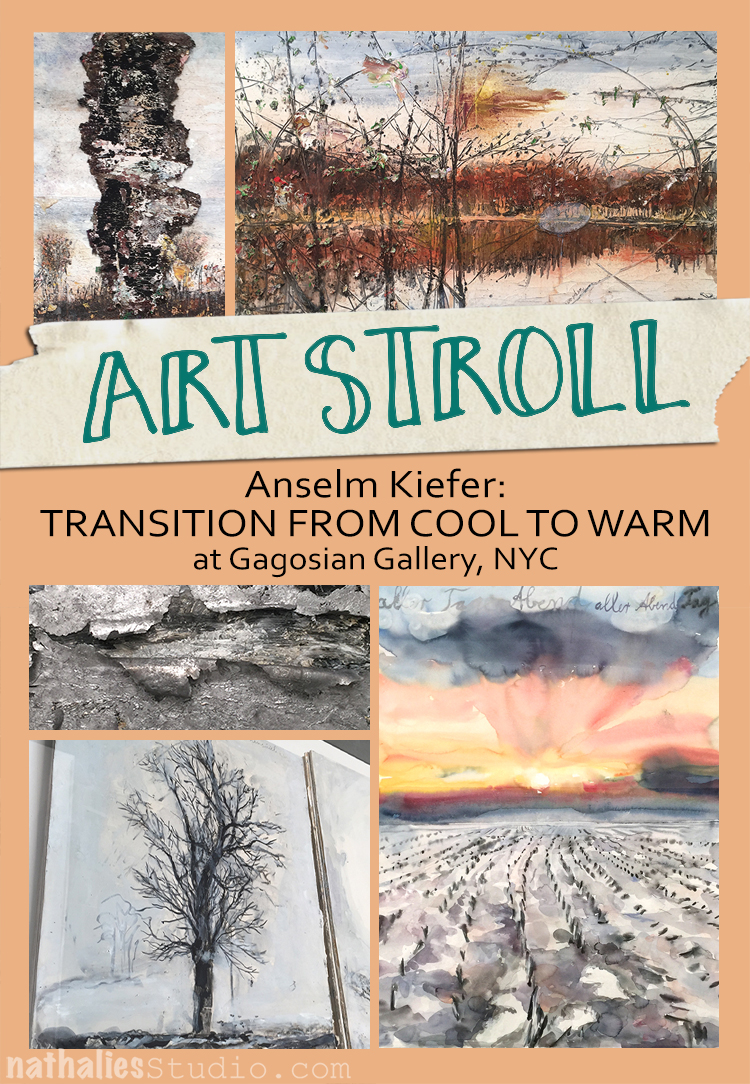
A couple days ago my artist friend Natalya Aikens and I went into the city to go to the Gagosian Gallery to see Anselm Kiefer‘s work. If you participated in Creative Jumpstart 2016, you know that Kiefer is one of my all time favorite artists. When Natalya told me about this exhibition I was crazy excited – and I wasn’t disappointed.
Kiefer is mostly known for his gigantic textured paintings, but he also paints with watercolor on a smaller scale and this exhibition at the Gagosian Gallery shows those two different bodies of works. It fits since Kiefer is interested in opposites.
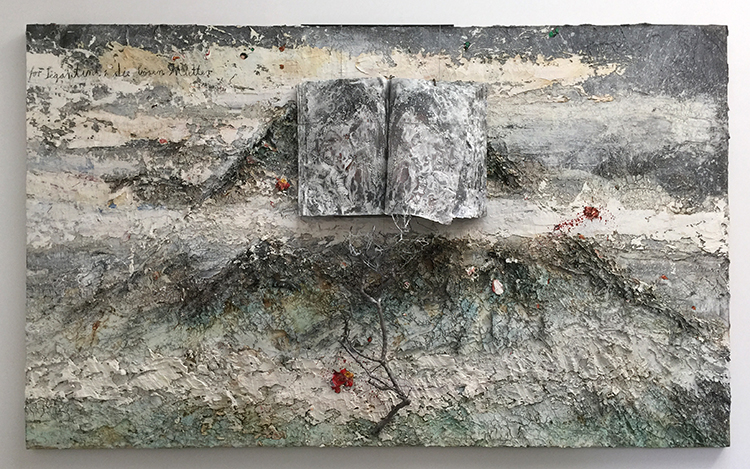
Anselm Kiefer, For Segantini: die bösen Mütter (For Segantini: The Bad Mothers), 2011–12, oil, emulsion, acrylic, shellac, wood, metal, lead, and sediment of an electrolysis on canvas.
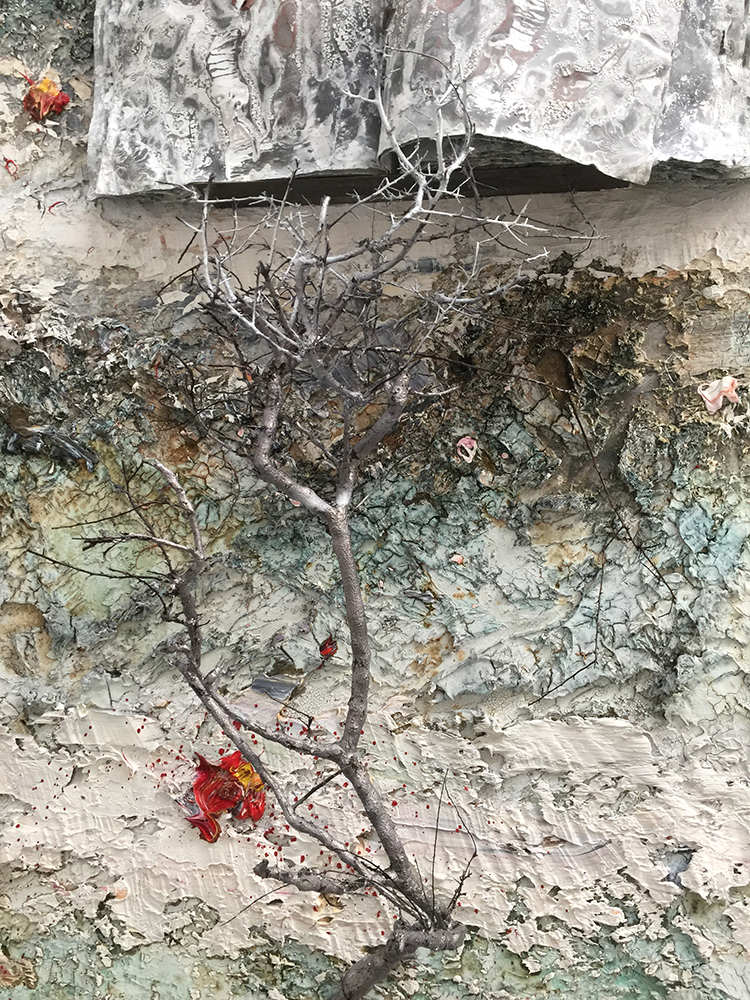
I love how Kiefer incorporates all kinds of materials and he doesn’t really care that a painting could change through aging, or natural alterations. In fact he welcomes this. He says he is more interested in the process – not only the process of making art but also the process of what happens to a painting naturally later – than in an absolute result. I think this is a totally freeing, interesting and open minded approach to art and life.
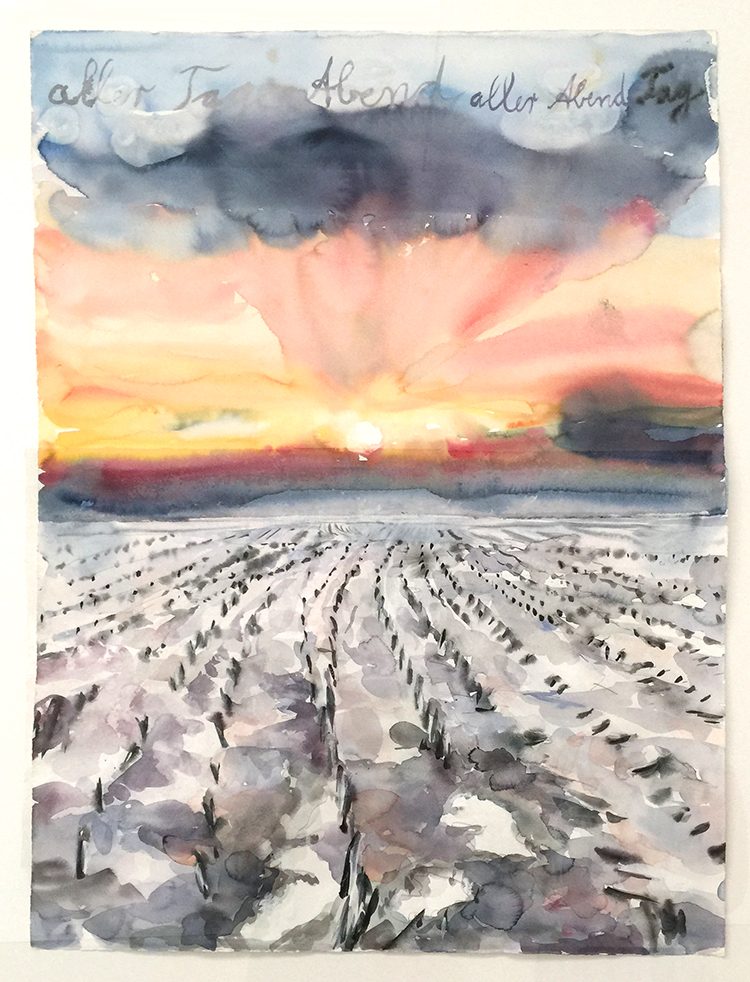
Anselm Kiefer aller Tage Abend, aller Abende Tag (The Evening of All Days, the Day of All Evenings), 2014 Watercolor on paper
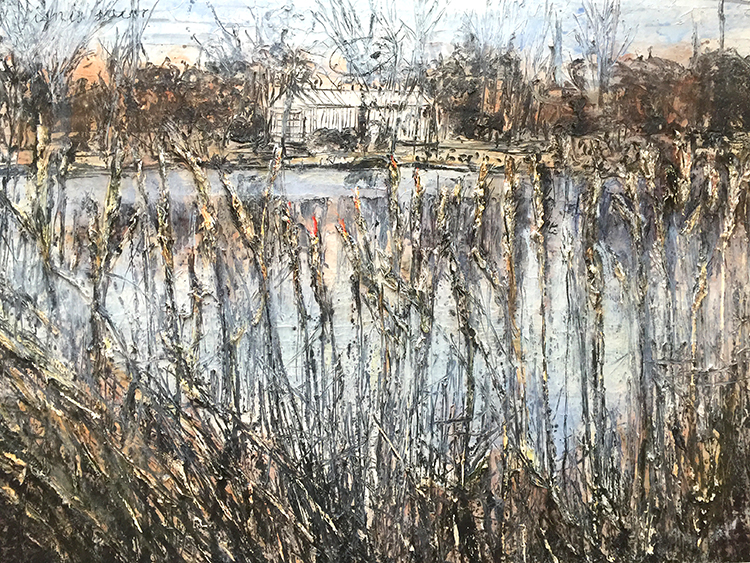
Anselm Kiefer Ignis sacer, 2016 Oil, acrylic, and emulsion on canvas
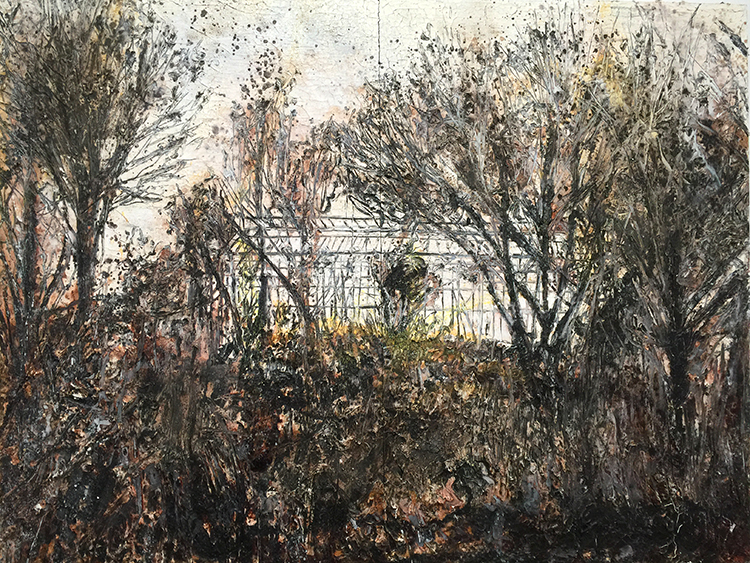
Anselm Kiefer des Malers Atelier (The Painter’s Studio), 2016 Oil, emulsion, acrylic, and shellac on canvas
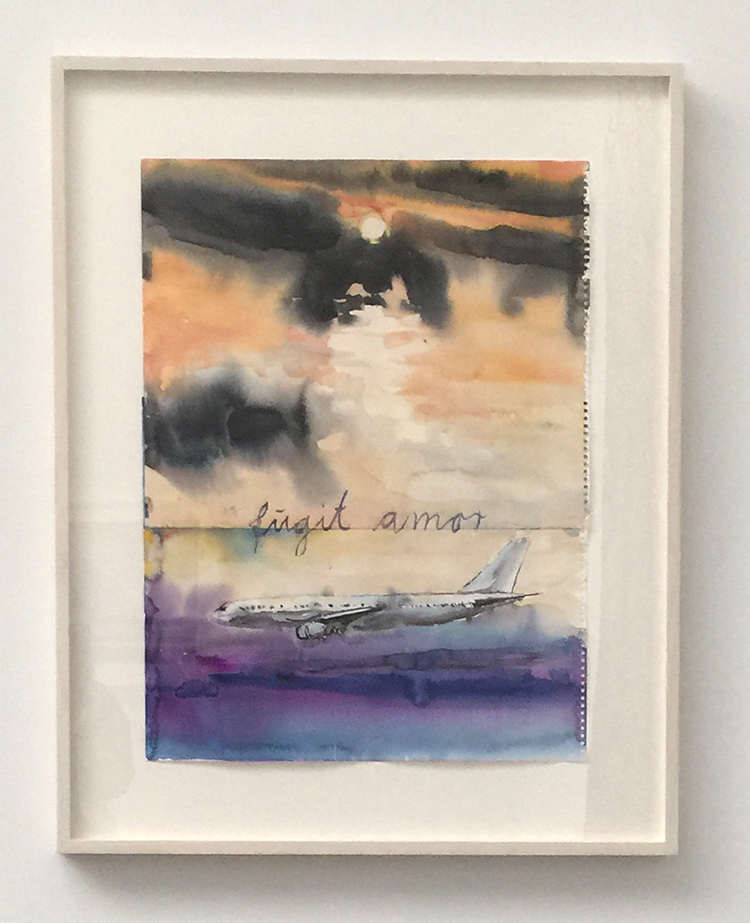
What I found interesting about his watercolor work was how freely he uses the colors, letting them do their thing – something I struggle with then using this paint medium.
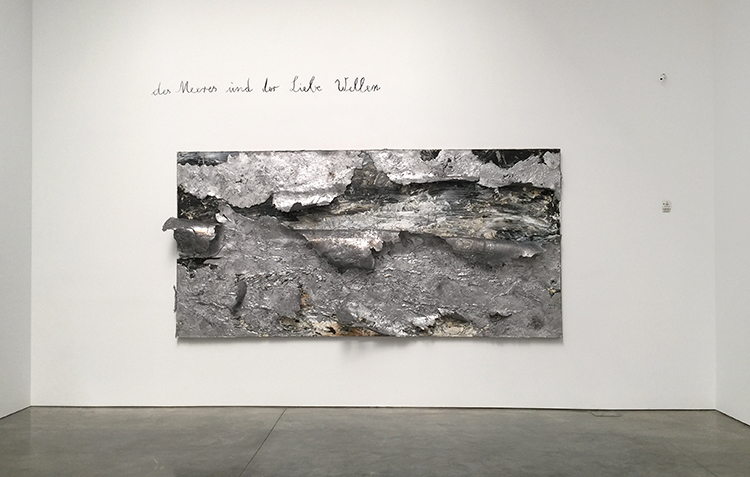
Anselm Kiefer Des Meeres und der Liebe Wellen (The Waves of Sea and Love), 2017 Oil, emulsion, acrylic, and lead on canvas
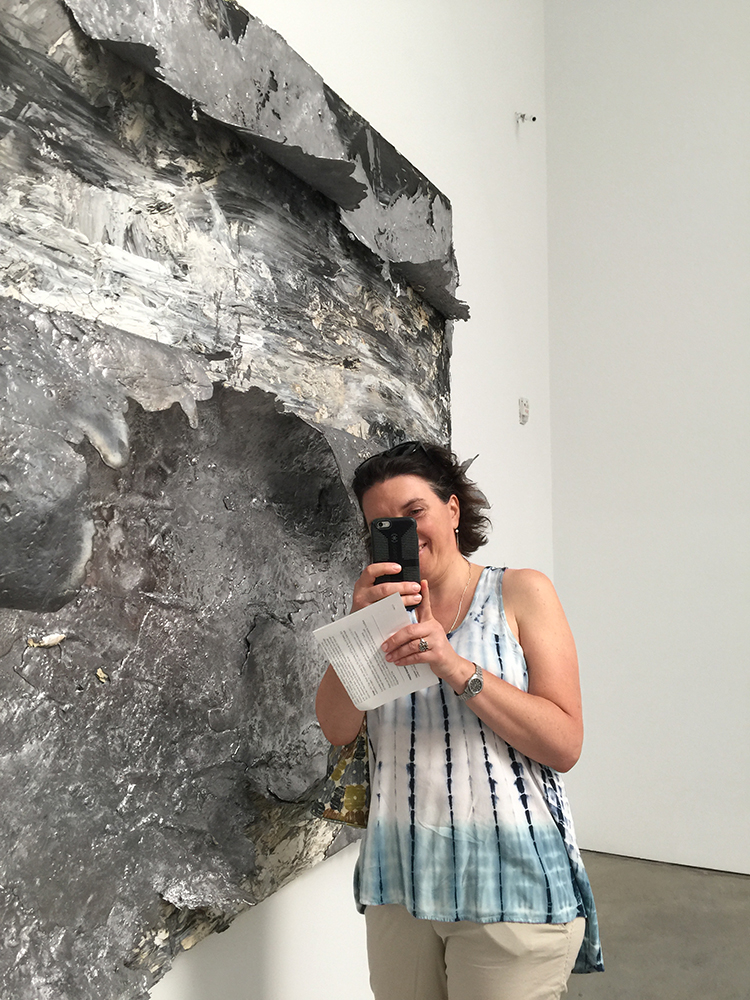
Look at Natalya taking a picture of me taking picture of her in front of a picture …well – hey … little bit of fun is ok ;)
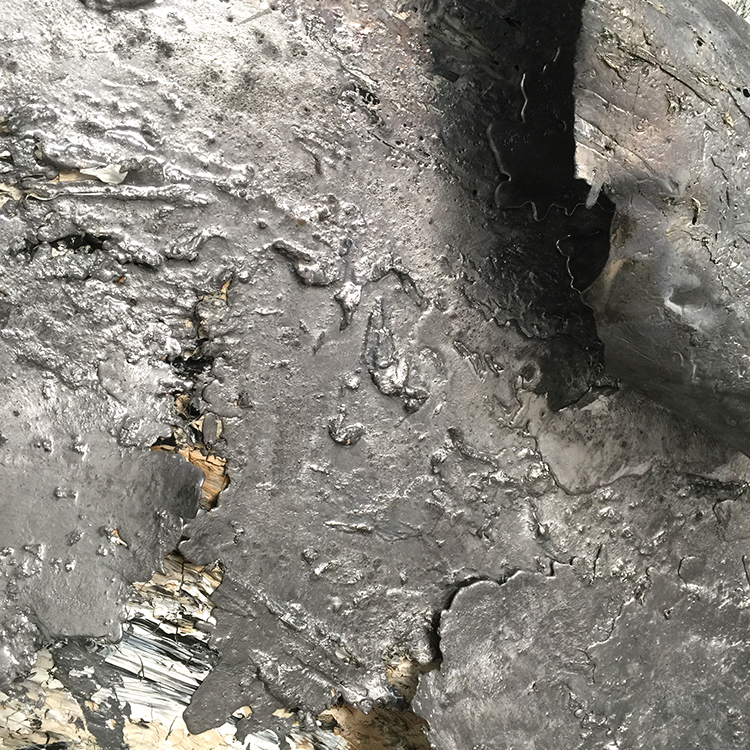
For this painting Kiefer poured liquid lead on top of a painting and then pealed it back to reveal the original painting again.
Kiefer also makes a huge amount of Artist Books. He is fascinated by books and stories, they have always played a huge role in his artwork.
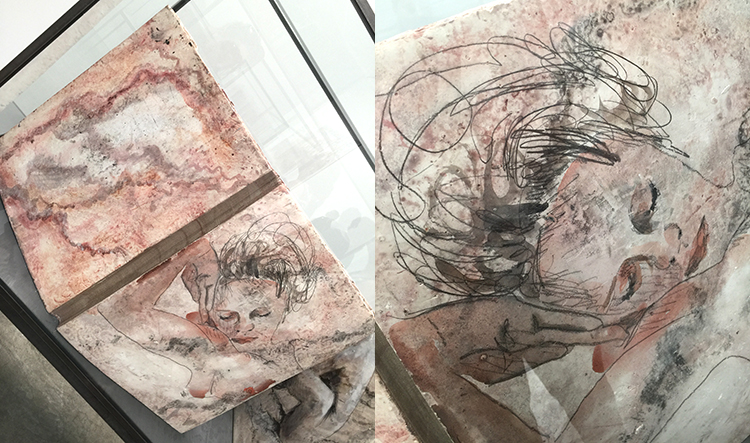
In an interview he once told the interviewer that he starts his morning by going into his library and in a state of still being absence, he blindly grabs a book which usually turns out to be just the right book for the day and often inspires him for his artwork.

These books are quite big – which is hard to see in these photos – they are more sculptural than books and you are tempted to touch them and flip the pages, although given how heavy they look that might be something you need more arm muscles …and you might never be able to set foot in this gallery again ;)
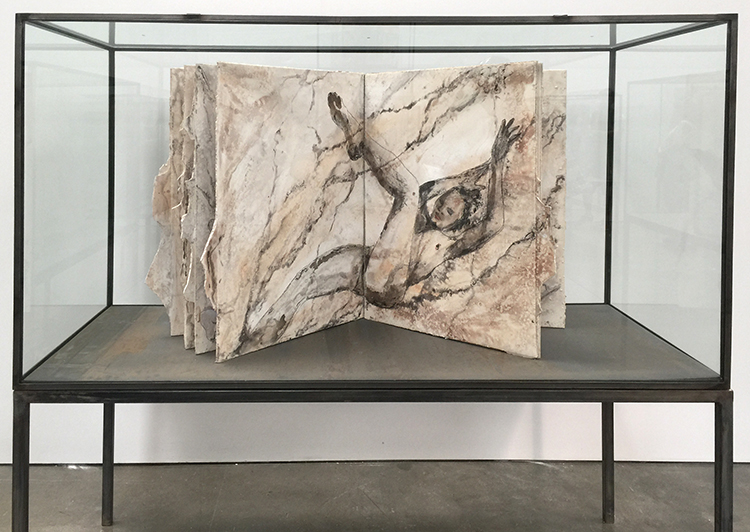
I love the marbling effects Kiefer created – with plaster – maybe gesso and watercolor.
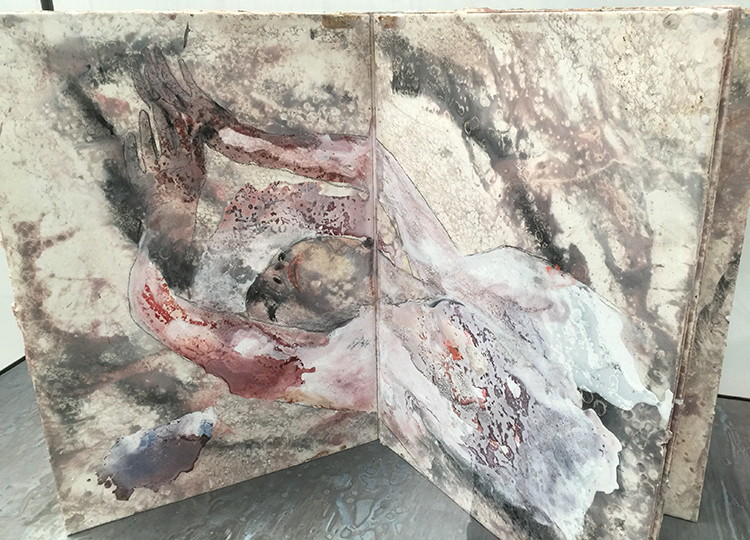
Klingsor’s Garden was the room with all those books called. Klingsor is a magician in the opera Parsifal. He has a garden full of beautiful flower maids.
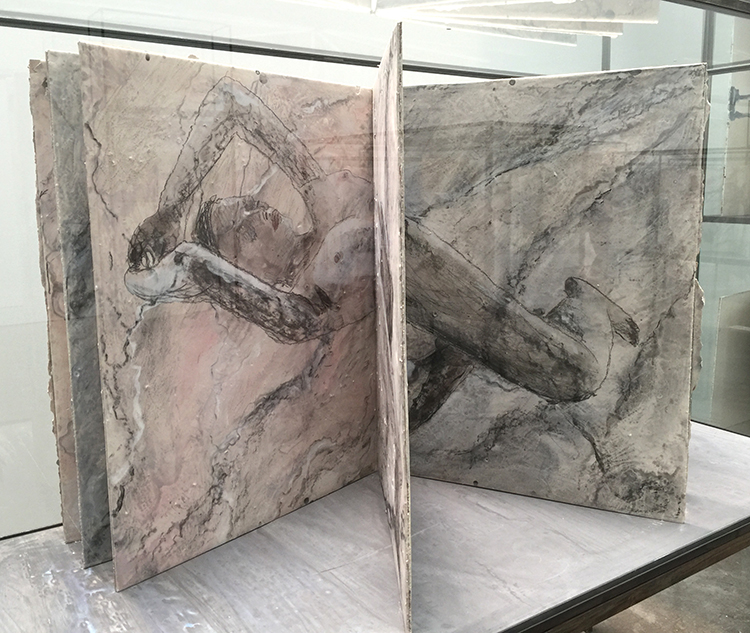
The way those books are set up is like a labyrinth and I guess it is no coincidence that you might get lost in looking at those books from all angles.
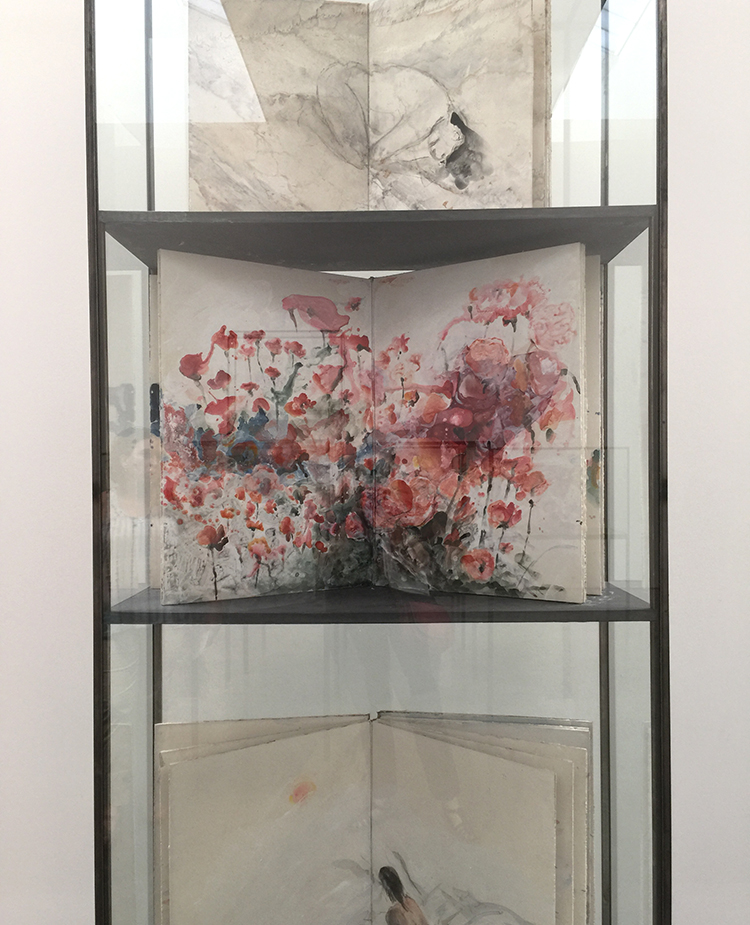
Fascinating!
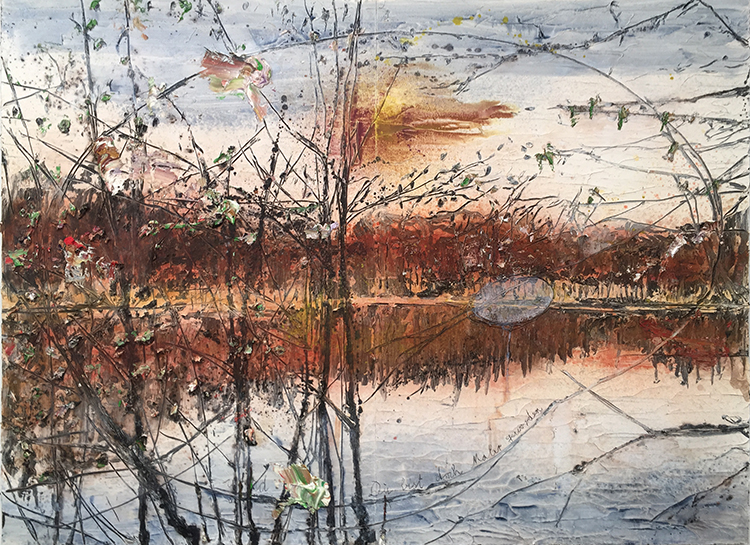
Anselm Kiefer, Und Du bist doch Maler geworden (and you became a painter nethertheless)
I didn’t see it in the gallery as this is a huge painting but when I actually took a look at the photo of the painting at home I realized there is painter’s palette carved into the painting – a painting about painting.

Anselm Kiefer, Aurora, 2015–17, oil, emulsion, acrylic, shellac, and sediment of an electrolysis on canvas
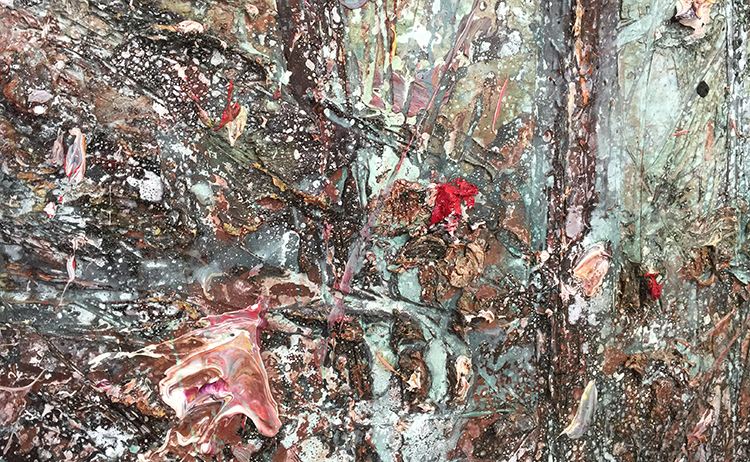
The texture and dimension in his work is just unreal . You have to see his work in person.
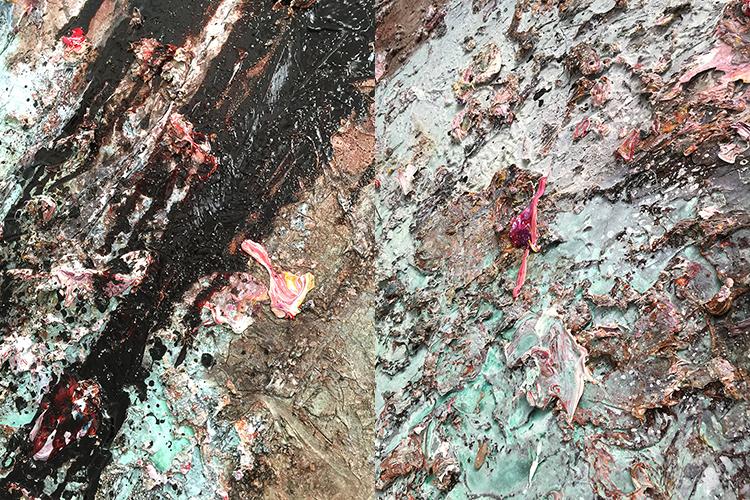
Given that this painting is so new- I would bet that it is still changing, drying, and processing. Now …if that is what the artist likes and wants… who are we to preserve it and have conservators going nuts about up-keeping the status quo?
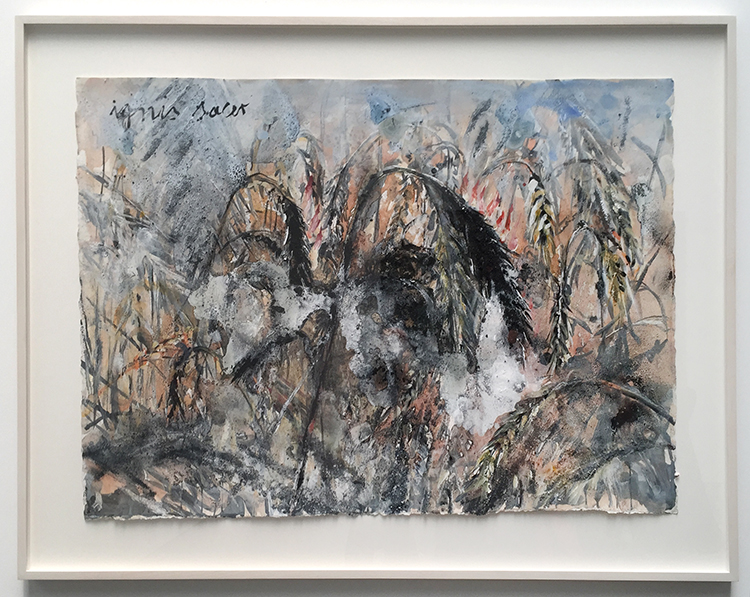
When I first looked at Kiefer’s watercolors I thought they were so different to his big paintings because of the missing texture but the closer I looked, the more I realized that he actually included a lot of texture with charcoal in some of them – and then there is also a lot of visual texture especially in the one above. But even the ones I showed earlier in this post have areas of texture quite unusual for watercolor painting.
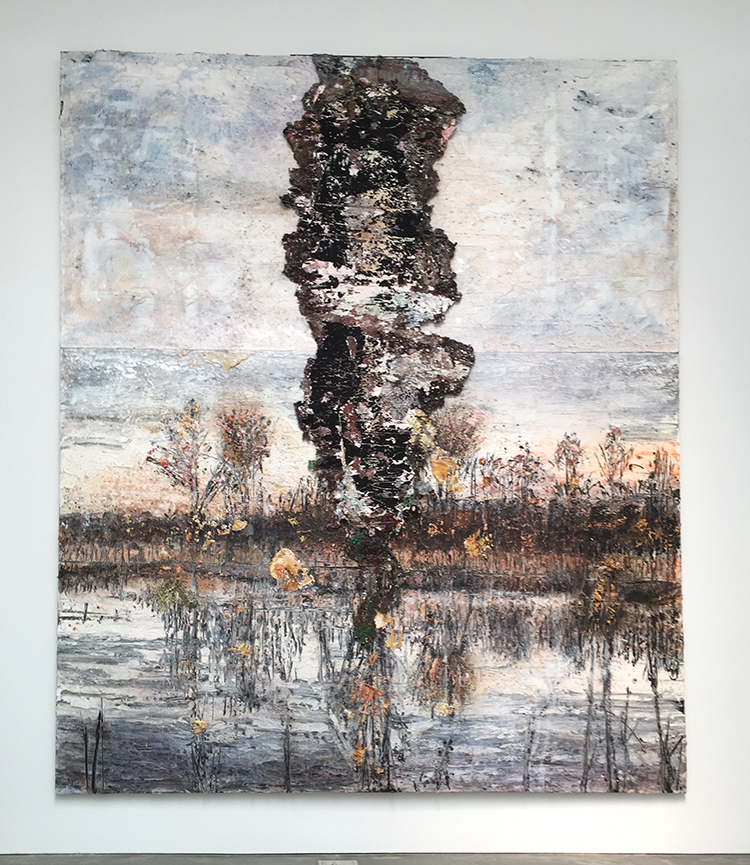
In one of the videos I saw a while back about Kiefer’s work I saw him hacking with a machete into his thickly layered painting. Big pieces of paint chips fly off the canvas, revealing yet even still thick layers of paint underneath. There was something so liberating and yet shocking seeing his actions.
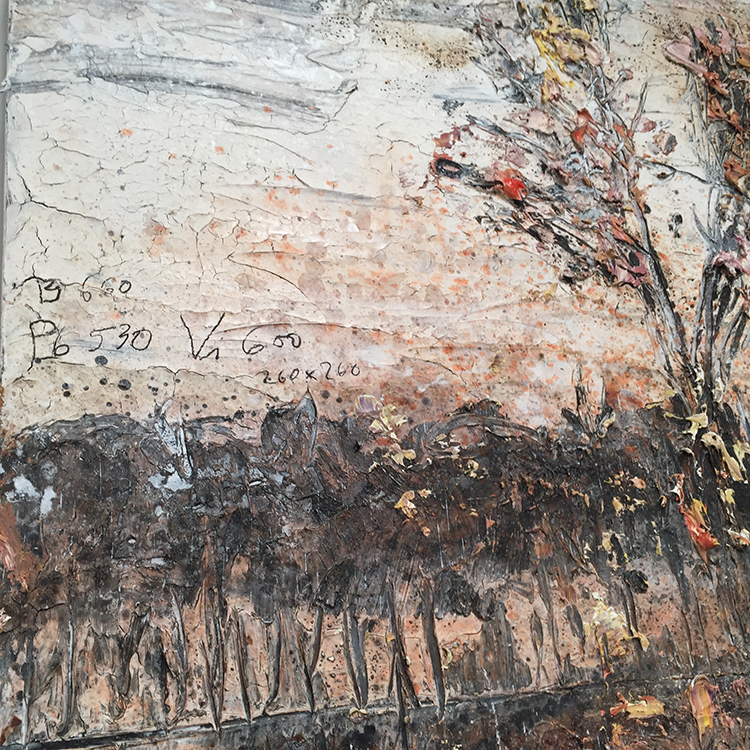
I love the beauty that get’s revealed by the act of slashing, scraping and peeling.
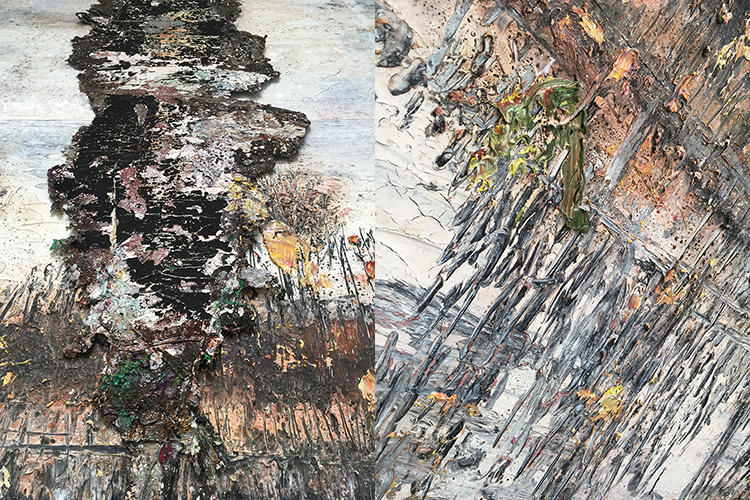
I also loved how some of the books had these raw edges – and as a viewer who always makes up their own story when looking at artwork for me Kiefer’s work is about human beings.
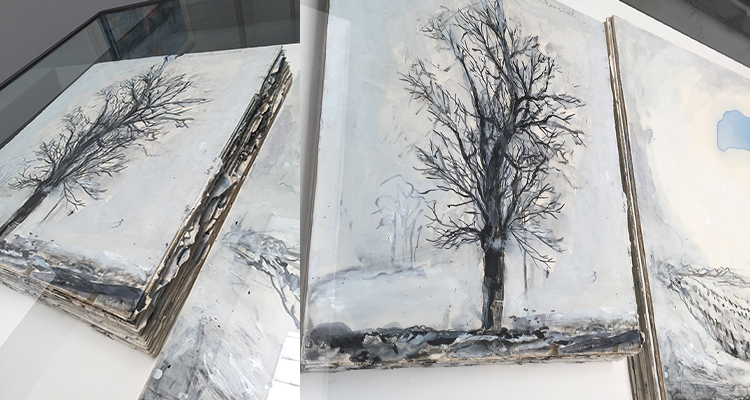
We are complicated, controversial, complex, layered, good and bad, we change, we can transform. Behind all the ugliness of human beings are always layers of beauty. There are no monsters and that is for me what explains why people can be horrible and cruel but then also be loving and like-able. That is what in my eyes his artwork represents.
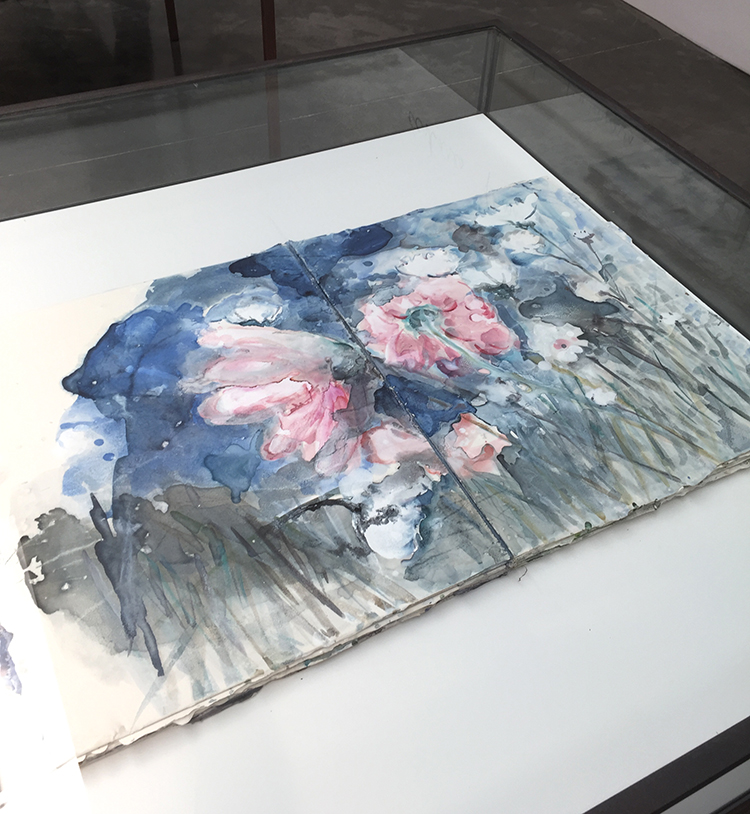
This exhibition has inspired me to no end – lot’s of thoughts, ideas, craving to explore. If you are in NYC – check this exhibition out– it got extended and it is open until September 1st. Don’t be intimidated that it is a gallery – the people at the desk barely lift their head when you come in- they know you are not there to buy but it seemed utterly fine for them and I think Kiefer approves ;)
Thank you Nathalie for sharing!
thanks for joining, Janis!
What an amazing exhibit!
it was indeed- very tempting to touch everything- LOL
What? Wait? Kiefer is at the Met Breuer? Who knew? Oh yeah – Nat did. Will have to get there too see this. Thanks!
Reply